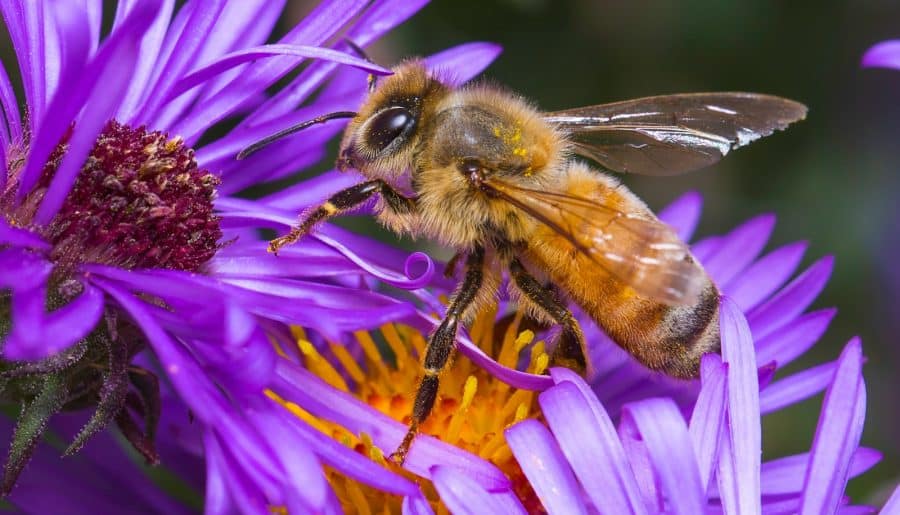Did you know that honeybees are important for our ecosystem’s survival? They help pollinate plants that produce food for us and many animals. Without them, our ecosystem could collapse. So, we owe them a lot!
But have you ever wondered how they work together to keep their colony safe? Honeybees live in hives with a specific social structure, where each bee has a unique role.
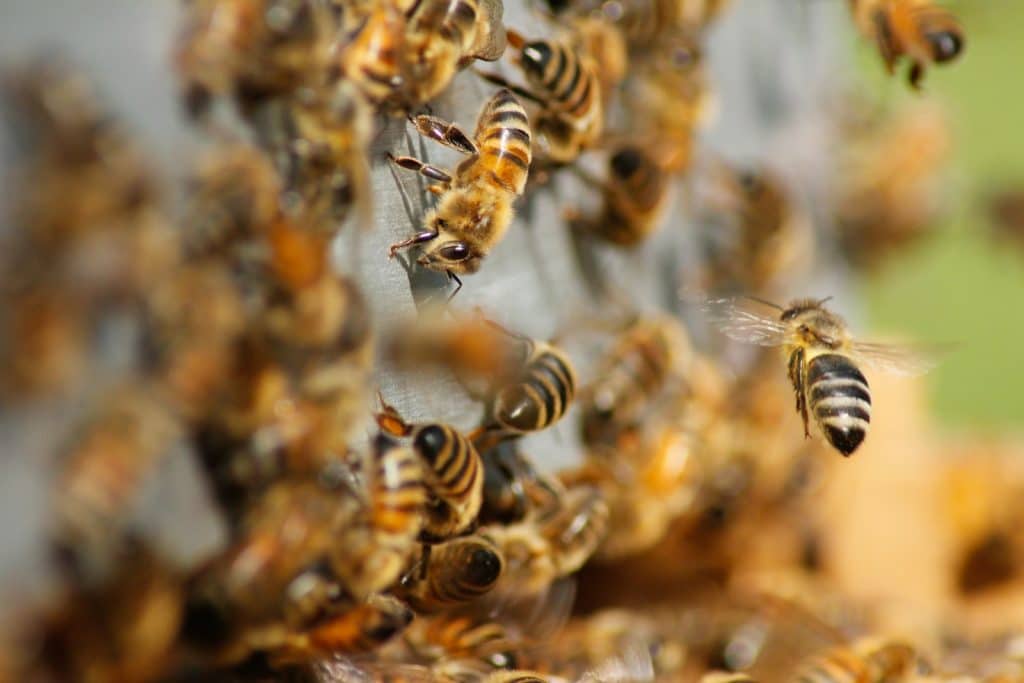
At the heart of every hive is the queen bee, known as the “mother” of all the bees in the hive.
Now, you might wonder, “Why honeybees need a queen bee? What makes her so important to the hive?”
Well, read on because I’m going to share with you why!
Bee Social Structure
Honeybees have an amazing social structure. The colony is made up of a queen bee, male drones, and female worker bees.
The queen bee has a very important role to play – she’s responsible for laying eggs and keeping the colony together. The male drones, on the other hand, have one job only – to mate with the queen bee.
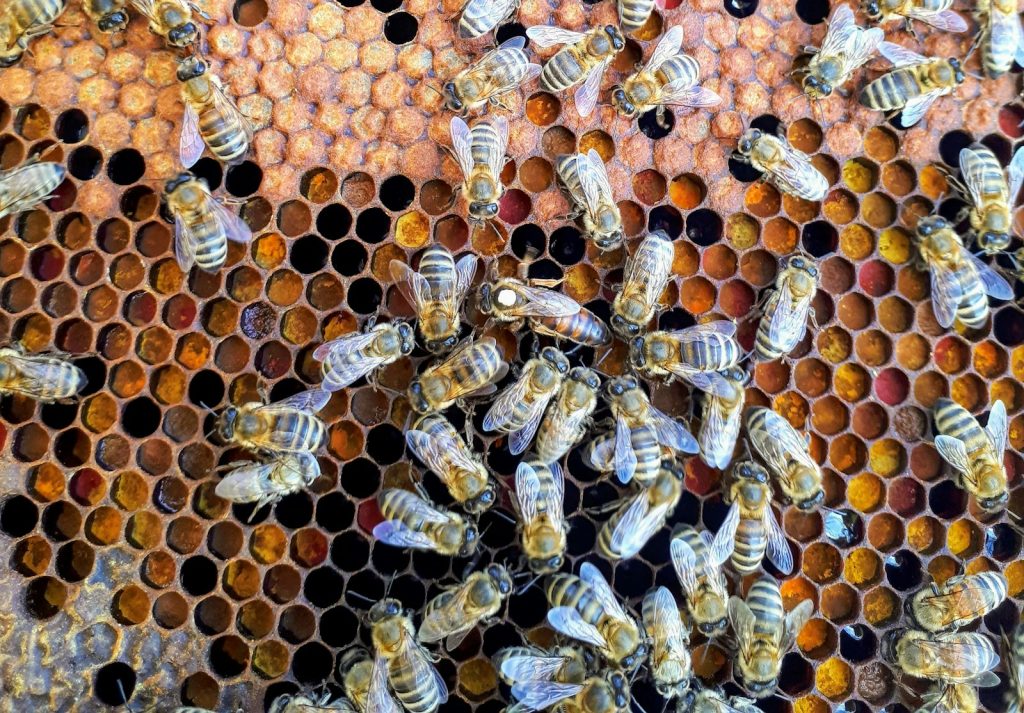
And as for the female worker bees, they are responsible for all other tasks. They do everything from constructing the hive to collecting nectar and pollen and caring for the young.
Here’s a fun fact: All worker bees are females and have a hierarchy within the colony. Some have specialized tasks, like being nurse bees, foragers, or those who look for food.
What Does a Queen Bee Look Like?
Now, let’s talk about what a queen bee looks like.
A queen bee looks similar to a worker bee but is usually larger, around 20mm. But if you want to spot her out of the hive, just keep an eye on her abdomen and legs – these have a pointed shape and are longer than other bees.

Now, here’s an interesting fact – you can also spot the queen bee by looking for a stinger without barbs. Unlike the worker bee’s barbed stinger, the queen bee’s stinger is smooth, which allows her to sting multiple times without dying. Pretty cool, huh?
How is a Queen Bee Born?
It all begins in a ‘queen cell,’ a special honeycomb cell that contains an egg for a future queen. These cells are shaped like tiny cups with an opening on the bottom and are usually built by worker bees.
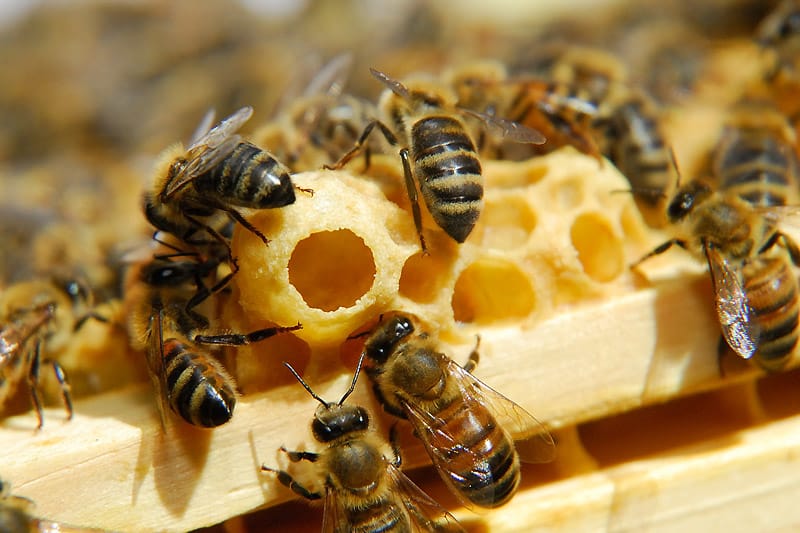
The existing queen lays an egg in each of these cells, but if she dies or leaves unexpectedly, the workers will move a new egg or young larva into a queen cell.
Queen bees are born as regular bee larvae, but the worker bees choose the healthiest larvae and are placed in queen cells.
Once the eggs hatch, the larvae are fed royal jelly for the first three days, a fluid secreted from the glands of nurse bees. This helps the bee mature faster and grow larger than other larvae in the hive.
Future queens are fed a huge amount of royal jelly during their larval stage, which triggers the development of their distinctive body shape and functioning ovaries.
In the final two days of the larval stage, queens are fed honey, which contains hormones that help their bodies develop further.
What is the Queen Bee’s Role in a Hive?
The queen bee is crucial to a colony’s survival and success. She is the only female bee with fully developed ovaries, and her primary roles are to regulate the colony’s unity with chemical scents and lay eggs. In fact, a healthy queen bee can lay up to 2,000 eggs per day. Isn’t that impressive?
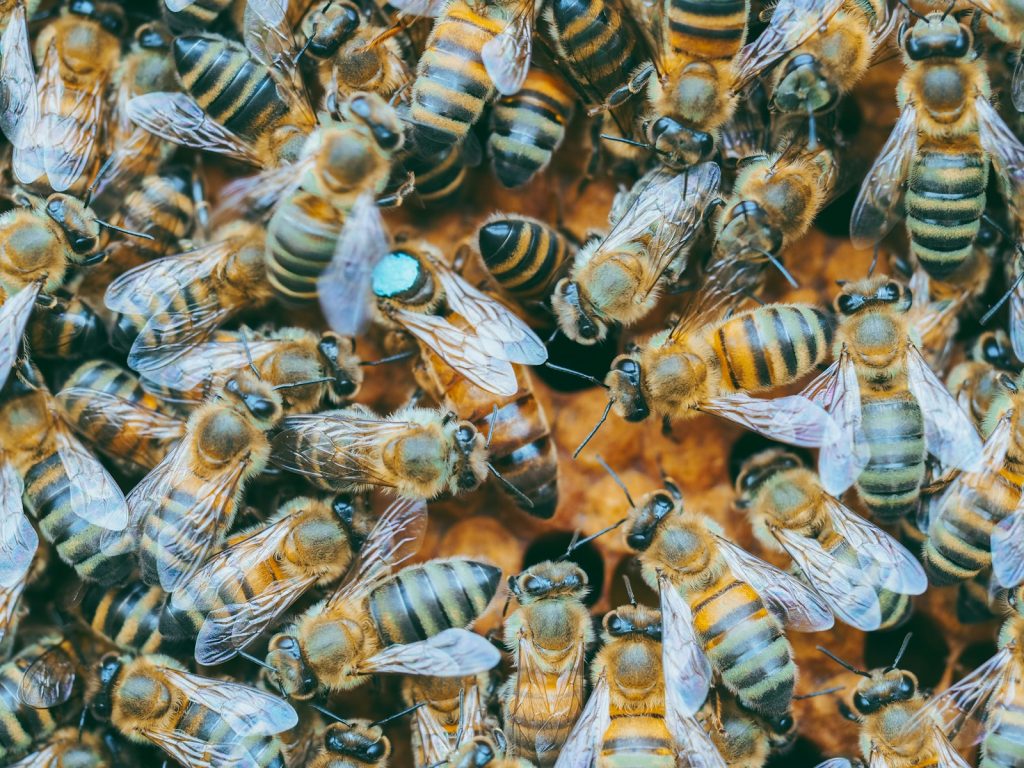
During her 2-3 year lifespan in the hive, the queen bee emits a specific scent called Queen Mandibular Pheromone (QMP). This scent helps worker bees understand if the colony needs a new queen or if everything functions normally.
QMP promotes worker unity and prevents worker reproduction and the rearing of new queens, which keeps the colony functioning smoothly.
Worker bees are also essential to any hive as they forage for food and take care of the entire colony. When they are young, they act as nurse bees, process nectar, feed the queen, and make honey. As they mature, they leave the hive to collect resources for survival.
